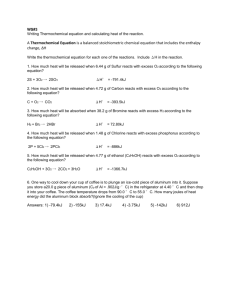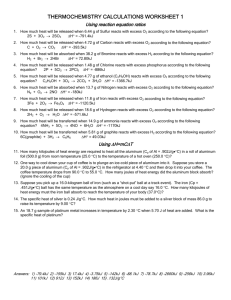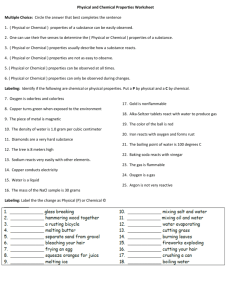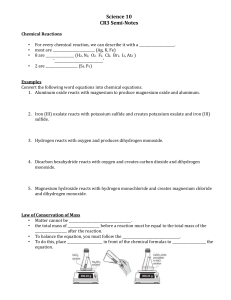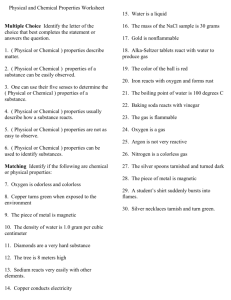Thermochemistry Calculations Worksheet
advertisement
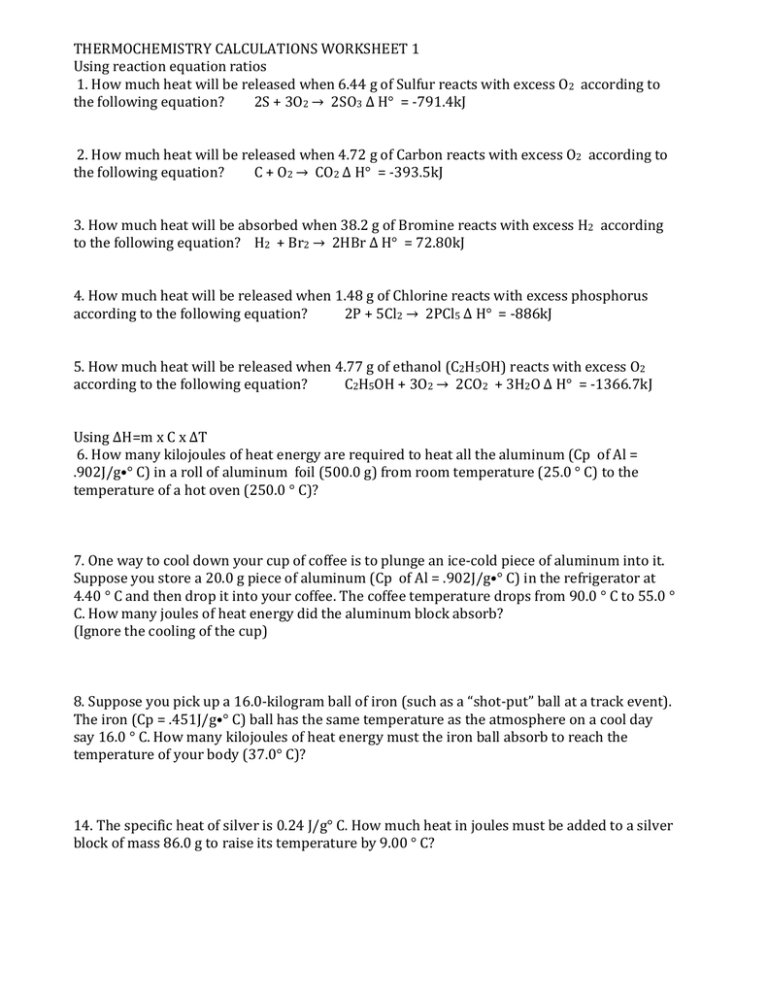
THERMOCHEMISTRY CALCULATIONS WORKSHEET 1 Using reaction equation ratios 1. How much heat will be released when 6.44 g of Sulfur reacts with excess O2 according to the following equation? 2S + 3O2 → 2SO3 Δ H° = -791.4kJ 2. How much heat will be released when 4.72 g of Carbon reacts with excess O2 according to the following equation? C + O2 → CO2 Δ H° = -393.5kJ 3. How much heat will be absorbed when 38.2 g of Bromine reacts with excess H2 according to the following equation? H2 + Br2 → 2HBr Δ H° = 72.80kJ 4. How much heat will be released when 1.48 g of Chlorine reacts with excess phosphorus according to the following equation? 2P + 5Cl2 → 2PCl5 Δ H° = -886kJ 5. How much heat will be released when 4.77 g of ethanol (C2H5OH) reacts with excess O2 according to the following equation? C2H5OH + 3O2 → 2CO2 + 3H2O Δ H° = -1366.7kJ Using ΔH=m x C x ΔT 6. How many kilojoules of heat energy are required to heat all the aluminum (Cp of Al = .902J/g•° C) in a roll of aluminum foil (500.0 g) from room temperature (25.0 ° C) to the temperature of a hot oven (250.0 ° C)? 7. One way to cool down your cup of coffee is to plunge an ice-cold piece of aluminum into it. Suppose you store a 20.0 g piece of aluminum (Cp of Al = .902J/g•° C) in the refrigerator at 4.40 ° C and then drop it into your coffee. The coffee temperature drops from 90.0 ° C to 55.0 ° C. How many joules of heat energy did the aluminum block absorb? (Ignore the cooling of the cup) 8. Suppose you pick up a 16.0-kilogram ball of iron (such as a “shot-put” ball at a track event). The iron (Cp = .451J/g•° C) ball has the same temperature as the atmosphere on a cool day say 16.0 ° C. How many kilojoules of heat energy must the iron ball absorb to reach the temperature of your body (37.0° C)? 14. The specific heat of silver is 0.24 J/g° C. How much heat in joules must be added to a silver block of mass 86.0 g to raise its temperature by 9.00 ° C?
